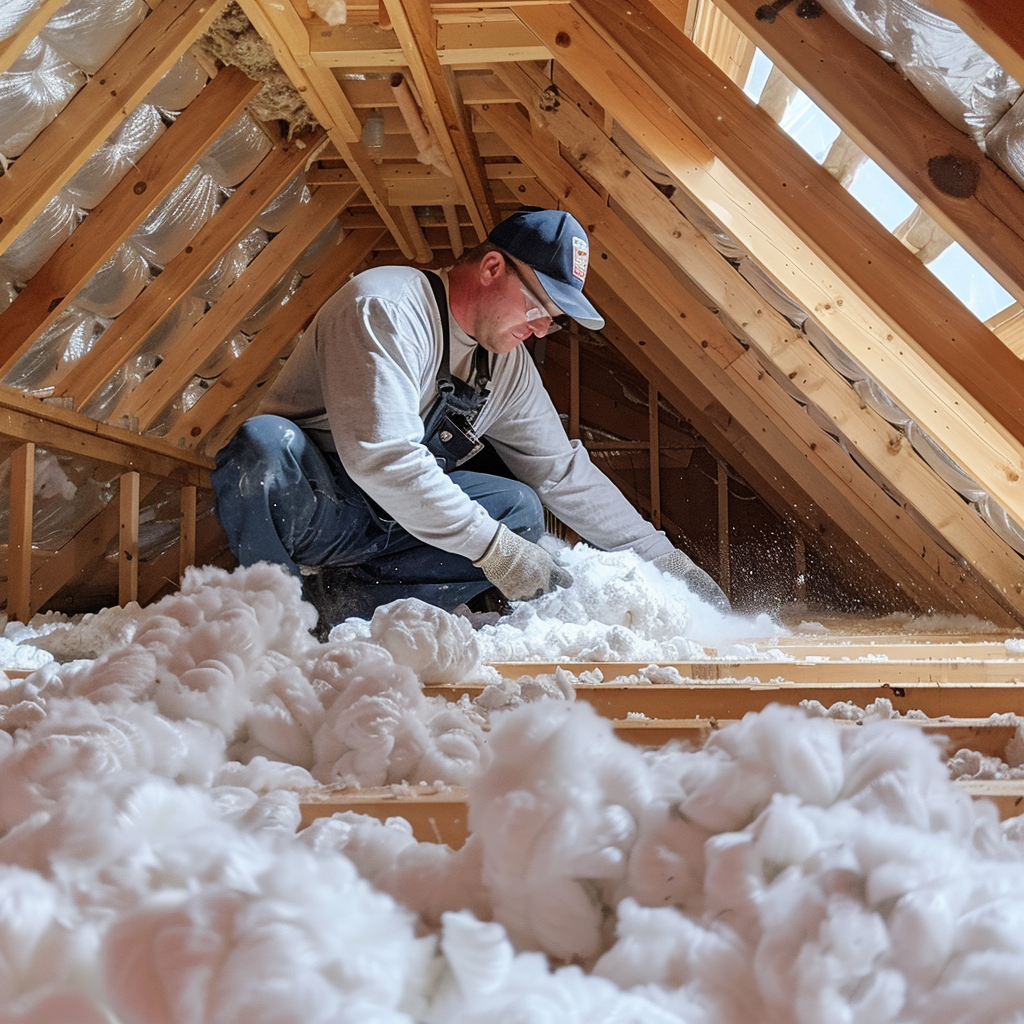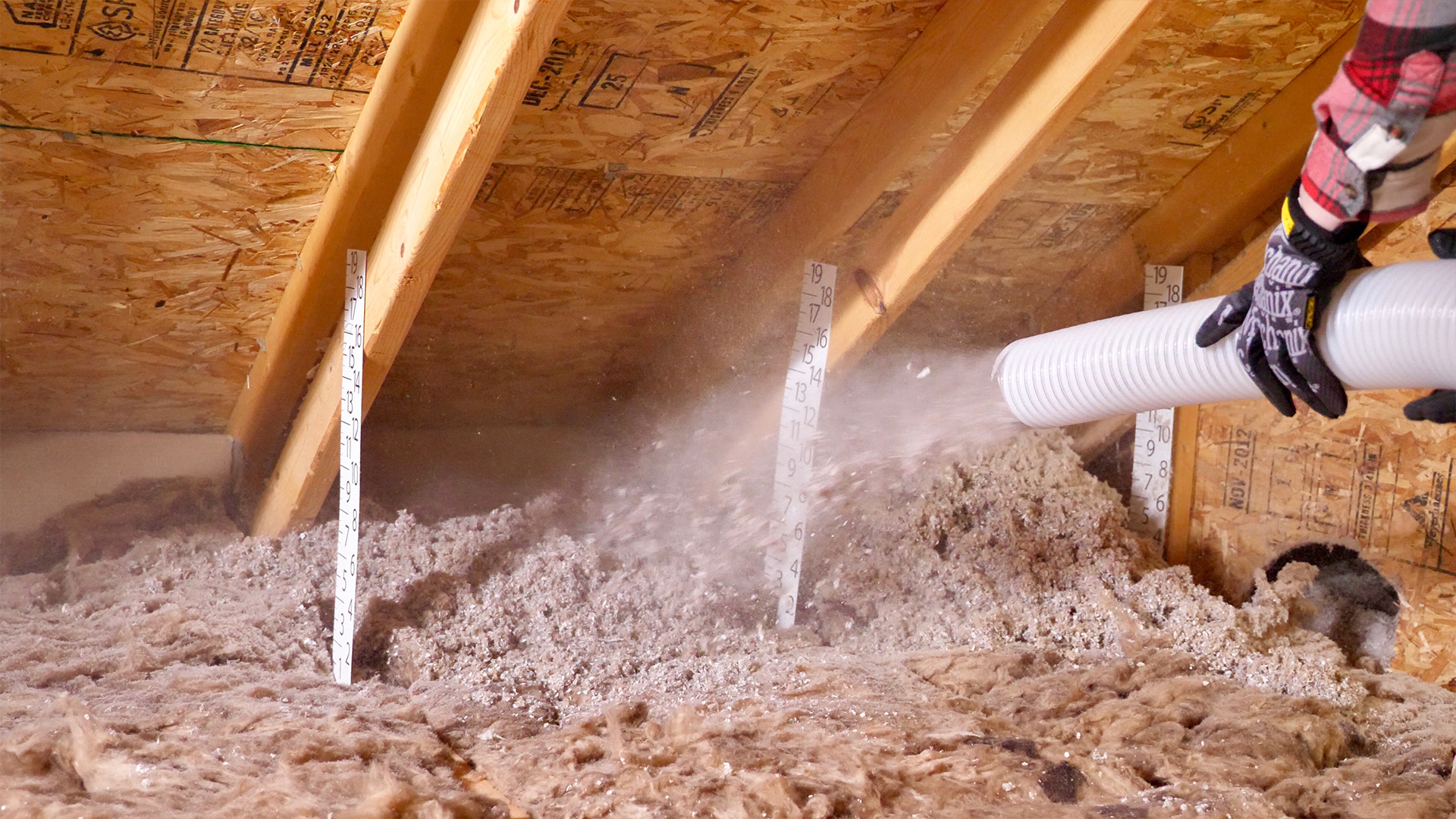Attic Insulation DFW: What You Required to Know Prior To Upgrading Your Insulation
Discover the Different Kinds of Attic Insulation and Their One-of-a-kind Advantages for Your Home's Power Efficiency

Fiberglass Insulation
Fiberglass insulation is just one of one of the most commonly used products for attic insulation because of its superb thermal performance and cost-effectiveness. Composed of little glass fibers, this material properly catches air, producing a shielding obstacle that aids maintain constant interior temperature levels. Its high R-value per inch makes it particularly effective at standing up to warmth transfer, which is essential for energy conservation in homes.
Installment of fiberglass insulation is relatively uncomplicated, typically readily available in batts or loose-fill kinds, suiting various attic room configurations. In addition, it is non-combustible and immune to dampness, reducing the risk of mold and mildew advancement. This toughness adds to its durability, making fiberglass a sensible long-term financial investment for homeowners.
Additionally, fiberglass insulation is frequently made from recycled products, which boosts its eco-friendliness. The material can additionally contribute to soundproofing, lessening sound transfer between areas. While it is necessary to use safety equipment throughout setup to avoid irritability from the fibers, the overall advantages of fiberglass insulation, including power financial savings and environmental considerations, make it a preferred choice for boosting attic performance and advertising a comfortable living setting.
Spray Foam Insulation
Spray foam insulation is a highly reliable choice for attic room insulation, recognized for its premium air sealing and thermal performance. This innovative insulation product is made up of a combination of isocyanate and polyol resin, which, when integrated, broadens quickly to fill voids and dental caries in the attic room space. Its ability to stick to various surface areas makes sure a continuous barrier versus air leakages, significantly minimizing warm loss throughout chillier months and heat gain during warmer seasons.
Among the key advantages of spray foam insulation is its high R-value per inch, which means it supplies superb thermal resistance in a fairly slim application. This is particularly helpful in attic rooms where room is usually limited. In addition, spray foam can assist reduce wetness accumulation, decreasing the threat of mold and mold growth, which can be harmful to both the framework and interior air high quality.
While the initial expense of spray foam insulation might be more than typical options, its long-lasting power savings, combined with raised comfort and enhanced home worth, make it a worthwhile investment for home owners seeking improved power efficiency. Attic Insulation DFW. Generally, spray foam insulation stands apart as an efficient service for maximizing attic room insulation
Cellulose Insulation

Cellulose insulation is a prominent choice for attic room insulation, largely composed of recycled paper products treated with fire resistants. This ecologically friendly choice is understood for its excellent thermal efficiency, efficiently reducing warmth transfer in both summertime and winter season. The thick composition of cellulose permits it to fill gaps and voids in attic room spaces, supplying a seamless barrier versus air leaks.
One of the substantial benefits of cellulose insulation is its capacity to resist mold and mildew and pests, owing to the fire retardant therapies utilized throughout manufacturing. Furthermore, it flaunts a high R-value per inch, which equates into premium power efficiency. Property owners can anticipate reduced heating & cooling expenses as an outcome of boosted insulation.
Installation is typically achieved with blowing loosened cellulose right into the desired area, enabling a fast and effective process. This technique additionally decreases disruption to the existing structure. Cellulose insulation has a fairly reduced ecological effect, as its manufacturing procedure makes use of recycled products, adding to lasting structure methods.
Rock Woollen Insulation
Amongst the different choices for attic insulation, rock wool, likewise called mineral wool, sticks out as a result of its outstanding thermal and acoustic performance. Made from recycled or natural materials, rock wool is developed by melting rock and spinning it into fibers, resulting in an item that supplies superb insulation residential properties.
Among the substantial benefits of rock woollen insulation is its high R-value, which shows its effectiveness in withstanding warmth circulation. This characteristic not just boosts energy effectiveness however likewise adds to maintaining a comfortable interior temperature year-round. Additionally, rock woollen is inherently fire-resistant, making it a more secure alternative for homes as it can withstand high temperature levels without melting or releasing toxic fumes.
Moreover, rock wool insulation stands out in soundproofing capabilities, efficiently decreasing sound transmission in between rooms and from outside sources. Generally, rock wool insulation offers a detailed solution for enhancing power efficiency, safety and security, and convenience in domestic settings.
Radiant Obstacle Insulation
Radiant barrier insulation acts as an effective solution for lessening warmth transfer in attics, particularly in warmer climates. This kind of insulation Full Report works by reflecting radiant warm far from living areas, thereby decreasing the amount of warmth that gets in a home during heat - Attic Insulation DFW. Usually made up of a very reflective material, such as light weight aluminum foil, glowing obstacles are mounted in attics, encountering the roof, where they can obstruct incoming warmth from the sun
The key benefit of radiant obstacle insulation is its ability to reduced cooling prices. By showing warm instead than absorbing it, glowing barriers can help maintain a much more steady indoor temperature level, reducing the work on cooling systems. This efficiency equates into reduced power bills and raised convenience for house owners.
Along with energy savings, radiant obstacles can also contribute to boosted indoor air quality. By reducing warmth buildup, they assist reduce moisture degrees, which can prevent mold growth and improve general air circulation. When mounted correctly, radiant obstacle insulation can be an invaluable enhancement to any type of energy-efficient home, making it a worthy factor to consider for home owners seeking to boost their attic insulation technique.
Verdict
Finally, understanding the different types of attic insulation-- fiberglass, spray foam, cellulose, rock wool, and glowing obstacles-- allows property owners to make enlightened choices concerning power efficiency. Each insulation type provides unique advantages, such as superior thermal resistance, wetness administration, and audio depletion. By picking the ideal insulation material, significant reductions in energy expenses can be attained, along with improvements in indoor convenience. Ultimately, the best option contributes to a more lasting living setting and advertises total power conservation.

In conclusion, comprehending the various kinds of attic insulation-- fiberglass, spray foam, cellulose, rock woollen, and radiant obstacles-- enables homeowners to make educated decisions relating to power efficiency.